Introduction
Gothic tattoos are a powerful blend of dark romance, mystery, and timeless elegance. Inspired by medieval architecture, Victorian fashion, religious iconography, and macabre art, these tattoos make a bold statement while honoring a love for the shadowy and sublime. Whether you’re drawn to haunting symbols like ravens and skulls, ornate Gothic cathedrals, or moody floral patterns and lace, Gothic tattoo art speaks to a deep sense of personal expression and aesthetic.
This style isn’t just about darkness—it’s about depth. Gothic tattoos often carry strong symbolism, from life and death themes to spiritual transformation and inner strength. Their dramatic shading, intricate linework, and bold contrast make them ideal for black-and-grey ink lovers or those who crave a tattoo that’s rich with emotion and history.
Whether you’re considering a full sleeve, a detailed back piece, or a smaller symbolic tattoo, Gothic art offers a wide range of visual storytelling. This guide explores how to choose the perfect Gothic tattoo, where to place it for the most impact, how to care for it, and FAQs to help you confidently start your ink journey into the darkly beautiful world of Gothic design.
How to Choose the Right Gothic Tattoo
Choosing the right Gothic tattoo involves more than picking a cool design—it’s about finding imagery that resonates with your personality, values, and artistic style. Here are key steps to guide you through the process:
1. Understand Gothic Aesthetics
Gothic tattoos typically feature elements such as:
- Medieval architecture (e.g., stained glass, cathedrals)
- Dark flora (roses, ivy, wilted flowers)
- Symbols of death or rebirth (skulls, coffins, hourglasses)
- Mythical creatures (gargoyles, ravens, bats)
- Occult symbols (pentagrams, moons, alchemy symbols)
The art style often includes high contrast blackwork, heavy shading, and fine details that create a moody, ornate appearance.
2. Identify What You Want to Express
Think about the mood or message you want your tattoo to convey. Are you honoring a personal transformation? Do you want something mysterious, protective, romantic, or eerie? Gothic tattoos can be poetic and personal—so connect the design to something meaningful.
3. Explore Substyles
Gothic tattoos span a wide range of substyles:
- Romantic Gothic: Lace, Victorian corsets, melancholic beauty
- Dark Fantasy: Vampires, mythical beasts, gothic fairytales
- Occult Gothic: Sigils, witchcraft, moon phases
- Classic Gothic: Gargoyles, religious relics, cathedral windows
Identifying a substyle can help narrow down the visuals and guide your artist’s creative process.
4. Work With a Specialist Tattoo Artist
Not all artists are skilled in Gothic style. Look for someone whose portfolio includes similar work—especially detailed black-and-grey shading or ornate linework. Gothic tattoos demand both technical skill and artistic vision.
5. Consider Long-Term Appeal
Make sure your tattoo is something you’ll appreciate over time. Choose timeless imagery and place it in an area where the detail can be preserved. If you’re unsure, start with a smaller piece before committing to a sleeve or large back piece.
Tattoo Placement Guide for Gothic Tattoos
Choosing the right placement is essential for showcasing the dramatic detail and layered symbolism of Gothic tattoos. Here’s how to make sure your placement matches your design and lifestyle:
1. Popular Gothic Tattoo Placements
- Arms (Sleeves or Forearms): Ideal for cathedral-like designs, flowing lace patterns, or chained relics. Sleeves allow for narrative flow, while forearms are perfect for showcasing symbolic designs like skulls or daggers.
- Back: One of the best canvases for dramatic Gothic art. Think full wings, tombstone settings, or a romantic depiction of life and death.
- Chest: A great location for symmetrical Gothic pieces, such as stained glass windows, filigree, or protective amulets.
- Thighs & Legs: These offer a larger space for detailed feminine Gothic designs like corsets, roses, or lantern-lit graveyards.
- Hands & Neck: High-visibility placements for bold Gothic symbols like crosses, spiders, or eye motifs. Consider career visibility before committing to these.
2. Design Flow Matters
Gothic tattoos look best when they follow the body’s natural curves. Ensure that architectural elements, like arches or lines, match the shape of your muscles or bone structure. Work with your artist to plan a layout that enhances symmetry and flow.
3. Avoid Overcrowding
Gothic designs are often detailed. Be cautious about cramming too many elements into small spaces. Use negative space or delicate shading to create contrast and give your tattoo room to “breathe.”
4. Think Ahead
If you’re starting with a small piece, choose a location that can evolve. For example, a wrist cross can eventually become part of a full sleeve featuring roses, ravens, and cathedrals. Discuss expansion options with your artist so future additions blend seamlessly.
1. Gothic Cross
A gothic cross tattoo is a powerful symbol that combines faith with dark, ornate design elements. Typically featuring intricate details like sharp edges, barbed wire, or roses, it represents the contrast between life and death, faith and darkness.

The use of shading and bold lines makes it a striking piece on the arm, chest, or back.
2. Raven
The raven is a classic gothic symbol associated with mystery, death, and omens. A raven tattoo can be depicted in a realistic style or combined with gothic elements like skulls, dark forests, or moonlight.
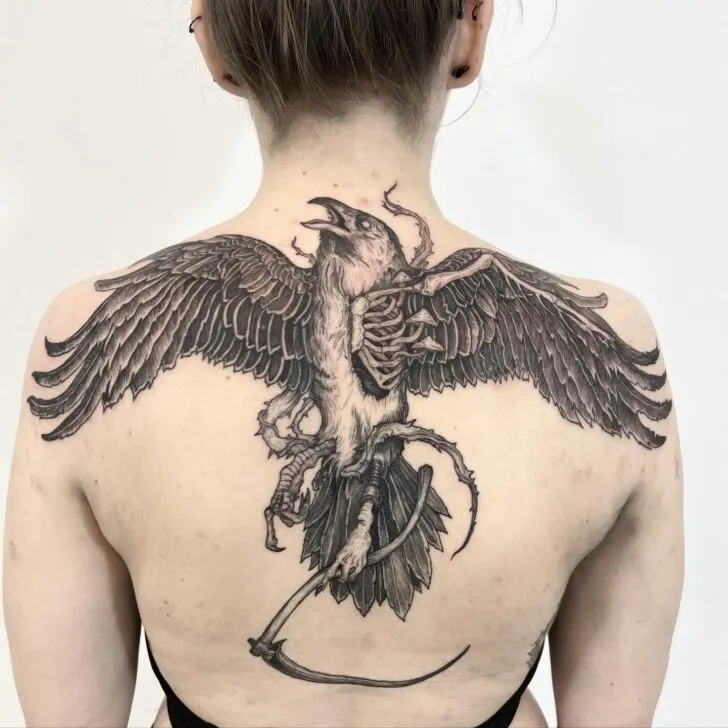
This design embodies the enigmatic and shadowy essence of gothic culture.
3. Gothic Script
Gothic script tattoos are characterized by their ornate and elaborate lettering. Words or phrases in this style are often used to represent meaningful quotes, names, or dates.
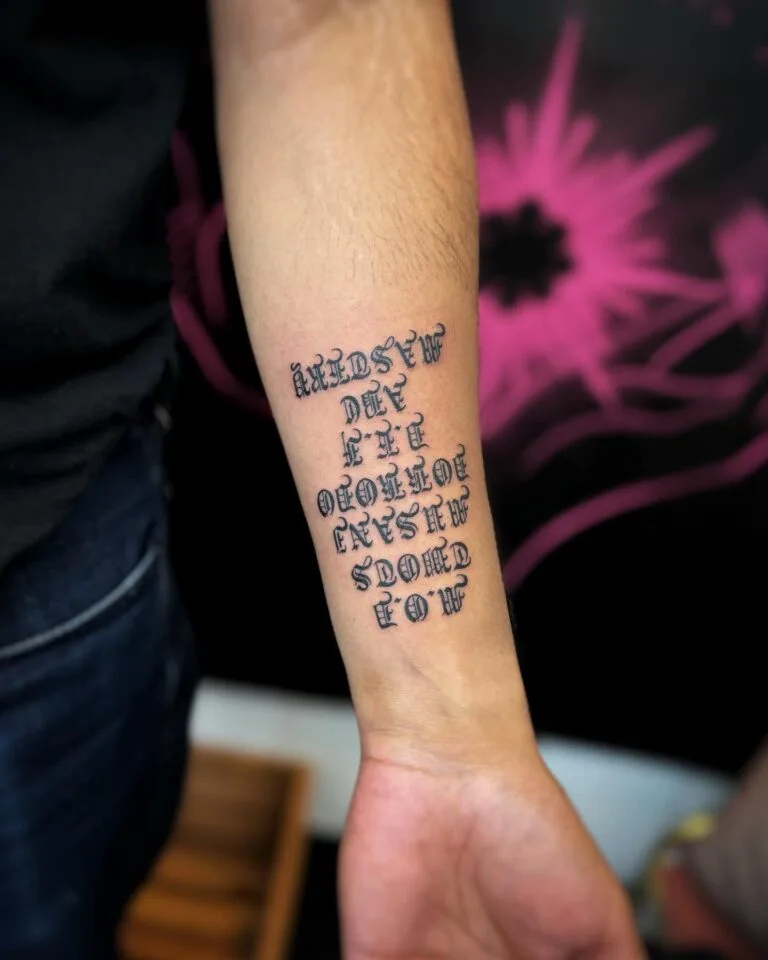
The dramatic and historical style of the font adds an air of mystery and elegance, fitting perfectly with gothic aesthetics.
4. Skull and Roses
A skull paired with roses is a quintessential gothic design symbolizing the delicate balance between life and death.

This tattoo often includes dark shading, intricate line work, and bold contrasts to emphasize both the beauty and decay in existence. It’s a popular choice for those drawn to the darker side of life.
5. Cemetery Scene
A gothic cemetery scene with gravestones, leafless trees, and iron gates creates a haunting atmosphere.
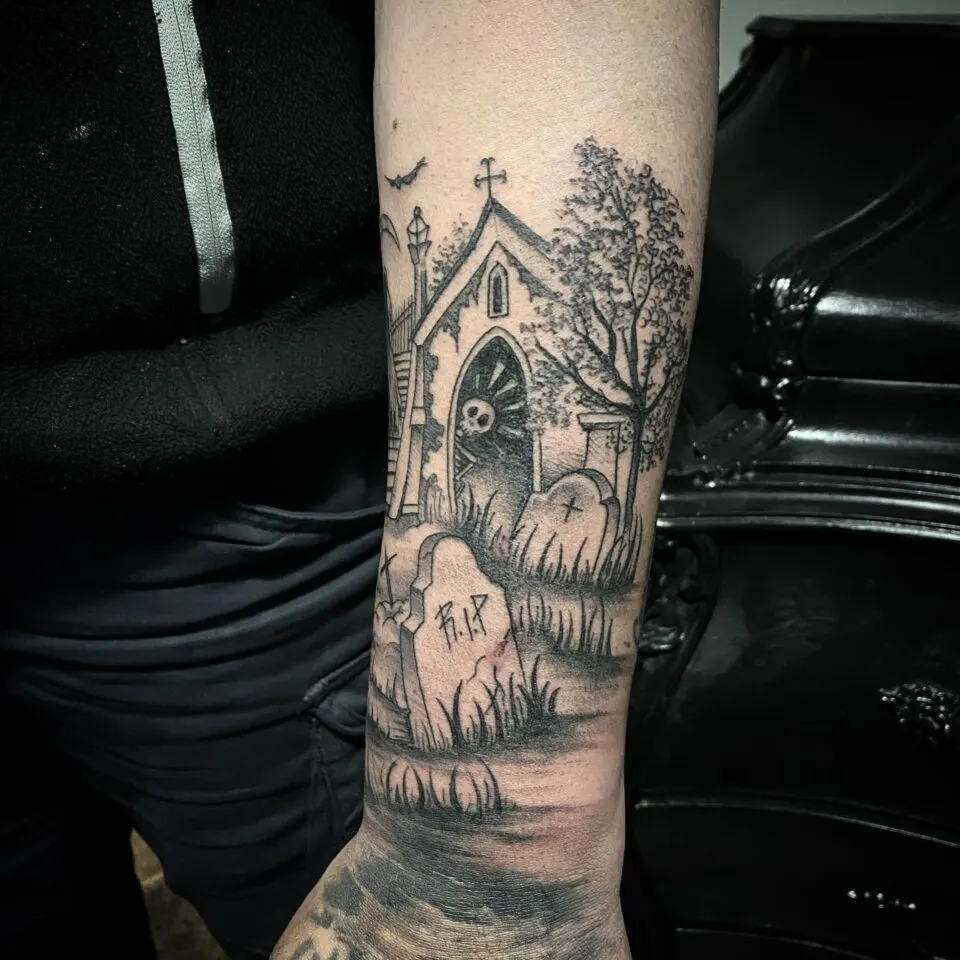
This design often includes foggy landscapes, ravens, or abandoned tombs, reflecting themes of solitude, mortality, and eternal rest. It’s a highly detailed piece that works well as a sleeve or back tattoo.
6. Pentagram
The pentagram is a classic gothic symbol often associated with mysticism, the occult, and protection. In gothic tattoo designs, it can be surrounded by intricate details like vines, skulls, or flames.
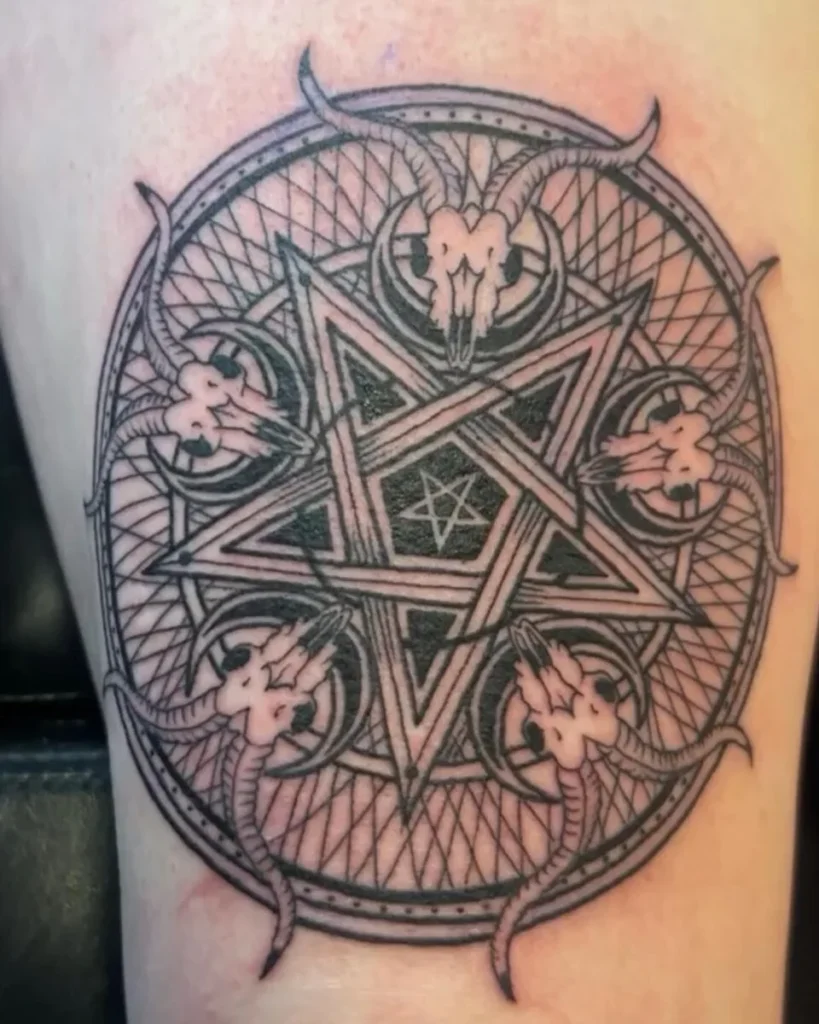
The bold geometric shape, combined with dark elements, creates a striking image steeped in esoteric meaning.
7. Gargoyle
Gargoyles are often depicted as grotesque stone creatures perched atop gothic cathedrals. In tattoo form, they represent guardianship, mystery, and ancient traditions.

A gargoyle tattoo usually features detailed stone textures, sharp claws, and menacing expressions, making it a bold and protective symbol.
8. Vampire Bats
Vampire bats are strongly associated with gothic horror and dark romance. A tattoo featuring these creatures can be both eerie and captivating, often incorporating elements like moonlit skies, mist, or gothic architecture.
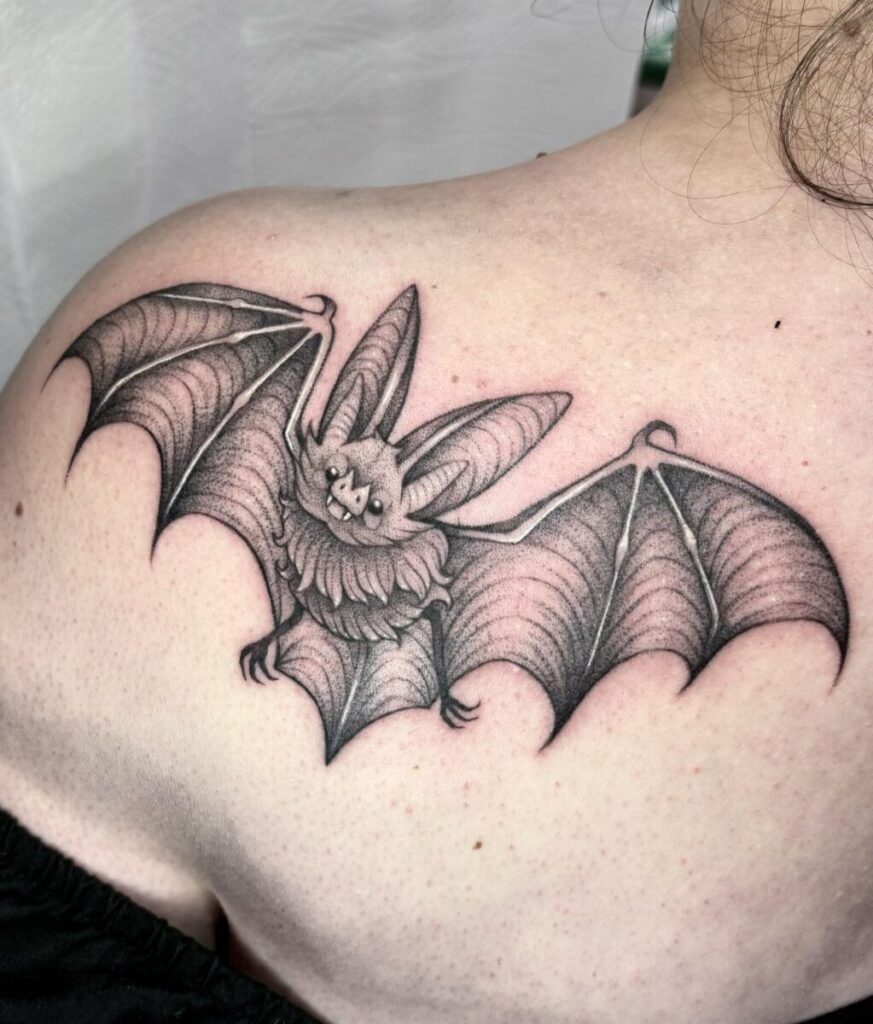
The design represents mystery, night, and the allure of the unknown.
9. Victorian Lace
Victorian lace patterns are elegant and intricate, offering a subtle yet darkly romantic gothic tattoo option.

This style often wraps around the arm or shoulder, mimicking the delicate fabric with a shadowy twist. It’s a beautiful blend of vintage charm and gothic aesthetics.
10. Hourglass
An hourglass tattoo symbolizes the passage of time and the inevitability of death. In gothic designs, the hourglass is often depicted with dark sand, ornate metalwork, and sometimes skulls or roses.

It serves as a reminder of mortality and the fleeting nature of life, encapsulating the gothic fascination with time and fate.
11. Memento Mori
“Memento mori” is a Latin phrase meaning “remember you must die.” A tattoo with this phrase often includes skulls, clocks, or wilted flowers, serving as a dark reminder of life’s impermanence.
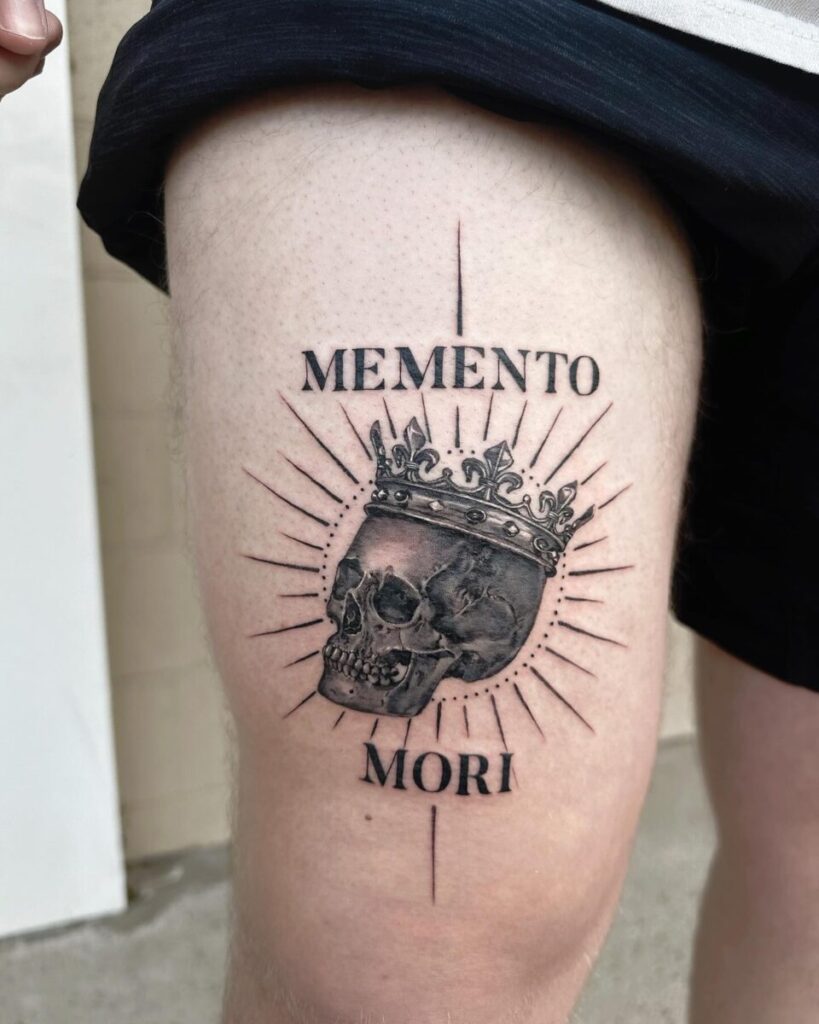
The gothic style emphasizes bold text with shadowy, intricate detailing, making it both profound and visually striking.
12. Moon Phases
The phases of the moon are a popular symbol in gothic culture, representing cycles, mystery, and the connection between night and transformation.
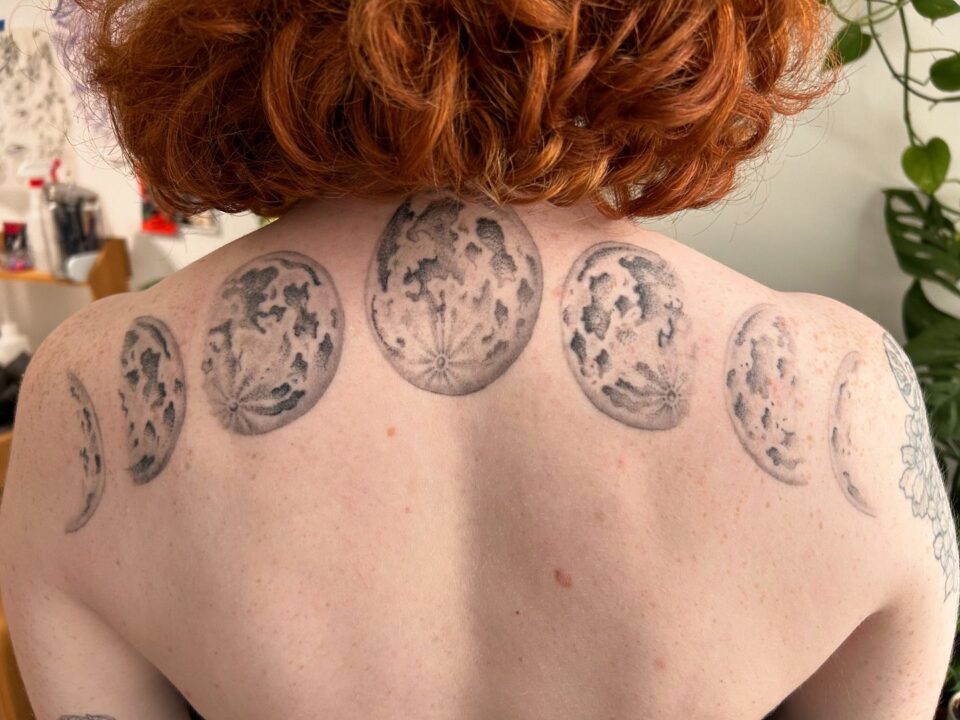
In a gothic tattoo, moon phases are often accompanied by dark clouds, bats, or skeletal hands. The design is elegant, mystical, and timeless.
13. Cathedral Windows
Stained glass windows with gothic imagery, such as dark saints, angels, or rose patterns, make for a stunning tattoo design.

The vibrant colors combined with shadowy outlines evoke the sacred and mysterious atmosphere of gothic cathedrals. This design can be highly detailed, offering a blend of light and dark.
14. Black Roses
Black roses symbolize dark beauty, mystery, and farewell. A gothic tattoo featuring black roses often includes elements like thorns, dripping ink, or skeletal hands holding the flower.

The contrast of dark petals against shadowy backgrounds creates a hauntingly elegant image.
15. Candle and Skull
A candle burning on top of a skull is a classic gothic image representing life, death, and the passage of time.
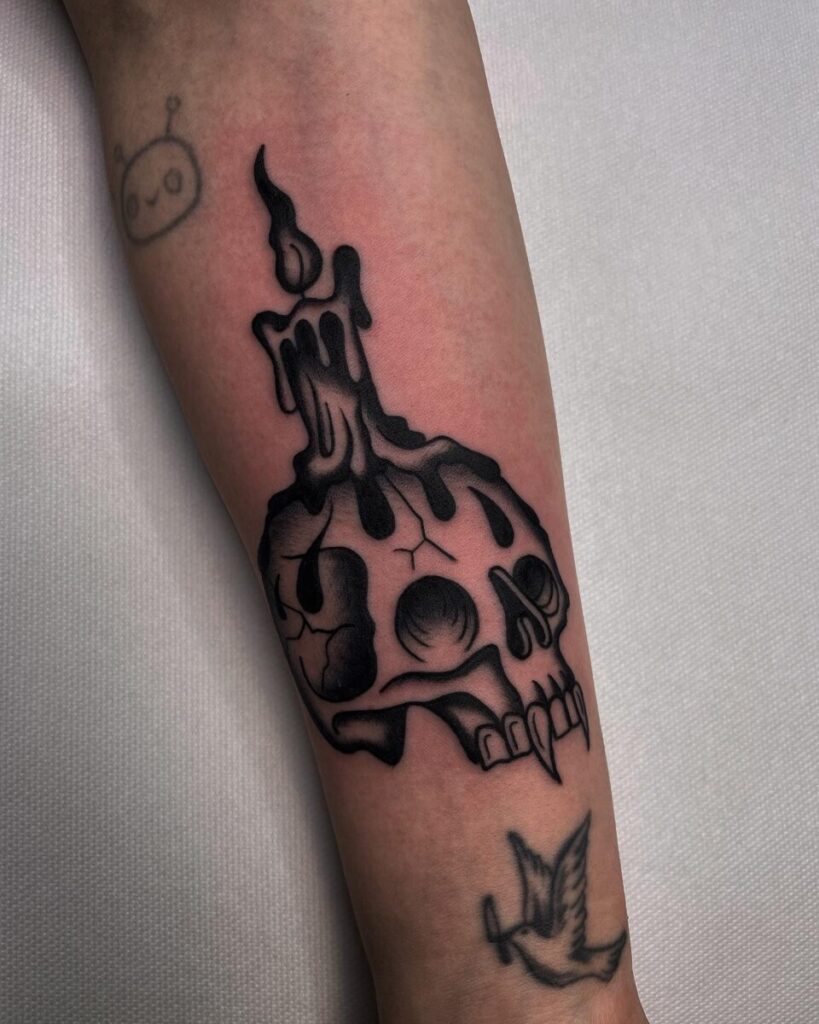
The wax dripping down the skull, combined with shadowy details, creates a sense of dark mystique. It’s a perfect design for those who embrace gothic symbolism.
16. Gothic Angel
A gothic angel, often depicted with dark wings, torn robes, and a somber expression, represents both protection and sorrow. The angel may carry symbols of mourning, like a wilted rose or a broken sword.

This design blends spirituality with gothic aesthetics, creating a powerful and emotional piece.
17. Raven and Skull
Combining a raven perched on a skull is a potent gothic tattoo that speaks to themes of death, mystery, and knowledge.
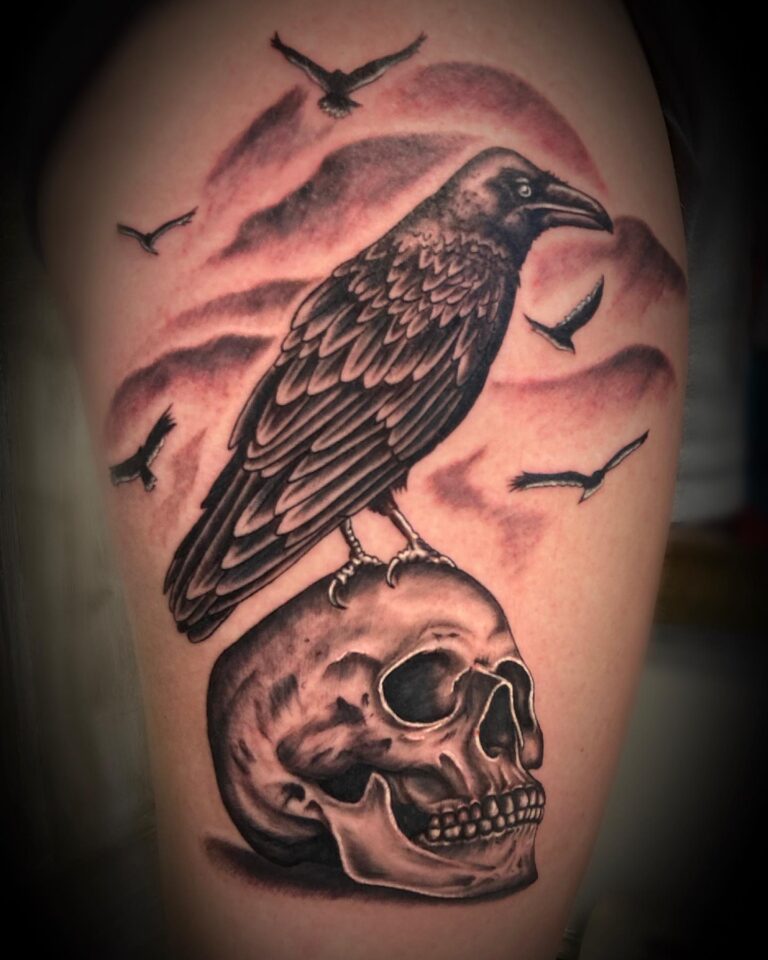
The dark feathers of the raven contrast with the stark white skull, while shadowy details like mist or falling leaves enhance the eerie atmosphere.
18. Chandelier
A gothic chandelier tattoo is elegant and ornate, often dripping with jewels and casting dark shadows. It represents luxury, darkness, and the haunting elegance of gothic interiors.

The intricate design with fine lines and shading makes it a sophisticated and unique tattoo choice.
19. Skeleton Keys
Skeleton keys symbolize secrets, hidden knowledge, and access to the unknown. In gothic designs, these keys are often adorned with baroque details, skulls, or intricate filigree.
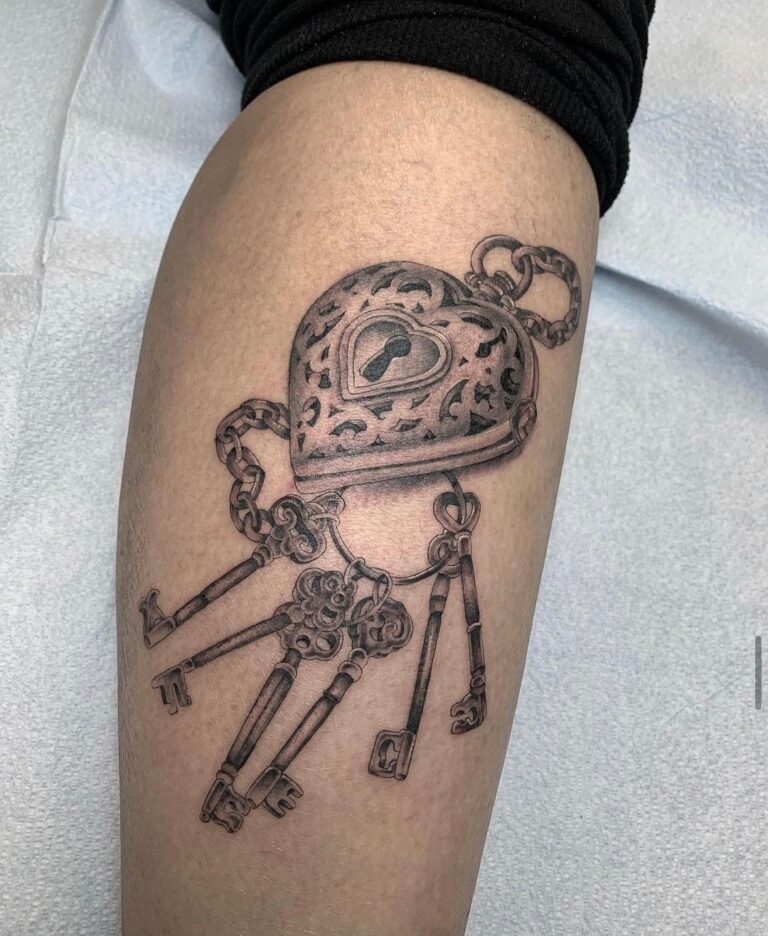
The design works well as a small tattoo or incorporated into larger pieces, carrying a sense of dark mystery.
20. Spider and Web
A spider weaving its web is a classic gothic symbol, representing fate, patience, and the darker side of nature.
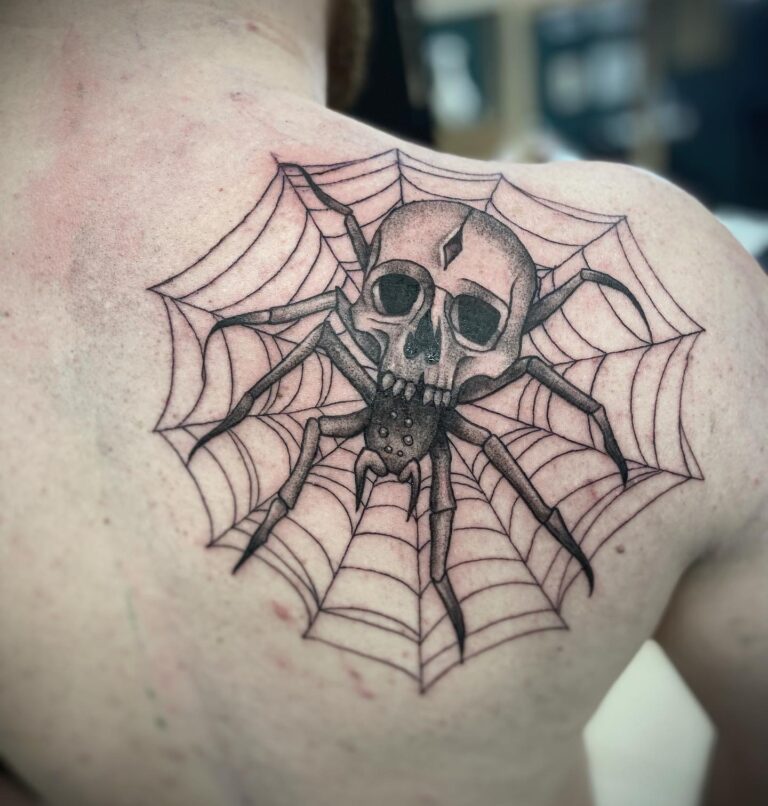
The web can be extended into detailed patterns, while the spider can be depicted with gothic embellishments, such as jeweled eyes or skeletal limbs, creating a chilling yet captivating design.
21. Cracked Mirror
A cracked mirror symbolizes fractured reality, self-reflection, and the dark side of beauty.

In gothic tattoo designs, the mirror is often ornate, with delicate frames and intricate cracks that reveal hidden images like skulls, eyes, or ghostly faces. It’s a hauntingly beautiful symbol of inner turmoil and dark introspection.
22. Victorian Mourning
Victorian mourning tattoos draw inspiration from 19th-century mourning practices, often featuring veiled women, wilted flowers, and somber portraits.
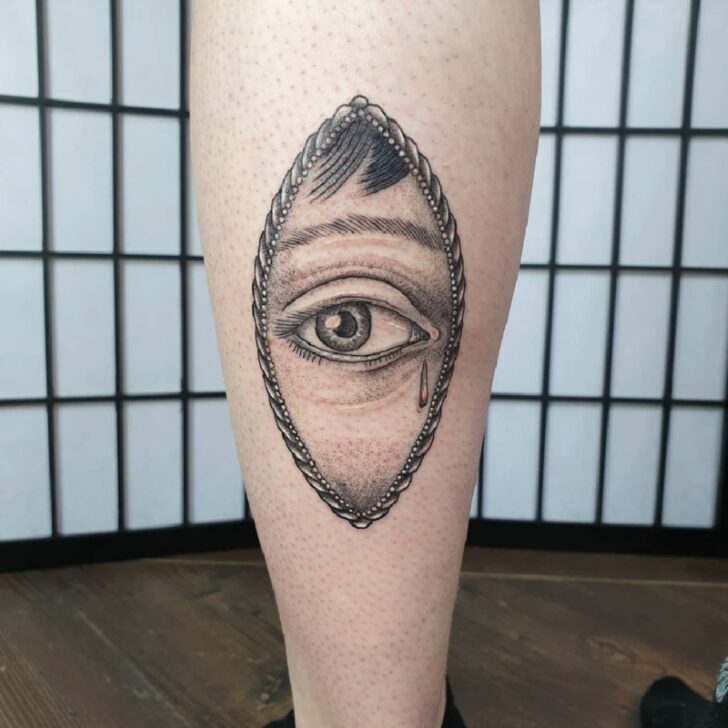
These designs capture the era’s fascination with death and loss while highlighting the elegance of gothic fashion. The intricate details and dark tones make this style a deeply expressive piece.
23. Death’s Head Moth
The death’s head moth, with its skull-like pattern, is a staple of gothic symbolism. Often surrounded by dark florals, crescent moons, or delicate lace patterns, the moth represents transformation, mortality, and the macabre beauty of life.

The intricate wings and eerie skull motif make it a standout gothic tattoo design.
Tattoo Aftercare Tips for Gothic Tattoos
Once you’ve invested time and money into your beautiful Gothic tattoo, aftercare is key to keeping it rich, dark, and detailed. Gothic tattoos often rely on deep shading and fine lines—so healing properly ensures the art stays sharp and expressive.
1. Follow Your Artist’s Advice
Your tattoo artist will offer personalized instructions based on your skin type, the inks used, and tattoo placement. Always prioritize their guidance over general tips.
2. Initial Care: Clean and Moisturize
Gently wash your tattoo with fragrance-free soap and lukewarm water within the first few hours. Pat it dry (don’t rub) and apply a thin layer of ointment like Aquaphor or a tattoo balm. Moisturizing helps prevent scabbing and keeps the design crisp.
3. Avoid Sun and Soaking
Sunlight can quickly fade the rich black tones common in Gothic tattoos. Keep the area covered until healed, then always apply sunscreen. Avoid swimming pools, baths, and hot tubs for at least 2–3 weeks, as bacteria can interfere with healing.
4. Be Gentle with Healing
Don’t scratch or peel scabs. Let them fall off naturally to prevent patchiness. Avoid tight clothing over healing tattoos, especially lace or leather, which can irritate the skin.
5. Long-Term Care
Even after healing, hydrate your skin regularly and protect your tattoo from excessive sun. Gothic designs often depend on deep blacks and intricate linework—proper care ensures the art remains bold for years.
Final Thoughts
Gothic tattoos are more than just ink—they’re wearable works of art that speak to our fascination with beauty, darkness, and symbolism. Whether you’re inspired by ancient cathedrals, mourning roses, mythical creatures, or the occult, a Gothic tattoo offers a deeply expressive and timeless way to mark your body.
These tattoos are rich in aesthetic and emotional depth, making them ideal for anyone who values storytelling, symbolism, and dramatic style. From choosing the right imagery to placing it with intention and caring for it properly, every step in the Gothic tattoo journey matters. This style rewards patience, collaboration with talented artists, and a passion for the macabre and the mysterious.
Whether you’re planning a single, meaningful symbol or a full Gothic sleeve, take your time. Research references, explore your personal connection to the theme, and ensure your artist understands your vision.
In the end, a Gothic tattoo becomes a part of your identity—bold, emotional, and visually unforgettable. Let it be a mirror of your inner world, your passions, and your aesthetic truth. And most importantly, enjoy the process of creating something hauntingly beautiful and completely unique.
Frequently Asked Questions (FAQs)
1. What are the most popular Gothic tattoo symbols?
Popular Gothic tattoo symbols include skulls, ravens, black roses, bats, coffins, cathedrals, hourglasses, and Victorian lace. Each has deep symbolism: skulls represent mortality, ravens symbolize mystery or transformation, and roses can express dark romance or loss. Many people also incorporate occult elements like moons, pentagrams, and sigils. Religious imagery like stained glass, angels, and crosses (especially Gothic crosses) are also frequently used, giving a spiritual edge to the aesthetic. These symbols can be used alone or combined into large, intricate designs. Choosing a symbol that reflects your beliefs or experiences adds emotional depth to the art.
2. Are Gothic tattoos just black and grey?
While most Gothic tattoos are done in black and grey for a moody, dramatic effect, they don’t have to be. Some artists incorporate deep reds, purples, or even muted blues to add depth or accent certain elements. For example, blood-red roses, glowing eyes on a raven, or stained-glass window effects can elevate the design while still maintaining a Gothic aesthetic. However, black and grey remains the most popular choice because it highlights shadows and contrasts beautifully—core elements in Gothic art. Ultimately, color use depends on your style and your artist’s strengths.
3. Do Gothic tattoos have specific cultural or religious meanings?
Yes and no. Many Gothic tattoos pull from Christian iconography (crosses, angels, cathedrals) or occult symbolism (sigils, moons, alchemy symbols), which can carry cultural or religious meaning. However, in tattoo culture, these symbols are often used more for their aesthetic and emotional impact rather than religious devotion. It’s important to understand the origin of symbols—especially occult or sacred ones—before getting them tattooed. If you’re using a symbol with religious ties, be sure it aligns with your beliefs or personal story. That said, Gothic tattoos are also an artistic form of self-expression and often blend symbols creatively without strict adherence to their traditional meanings.